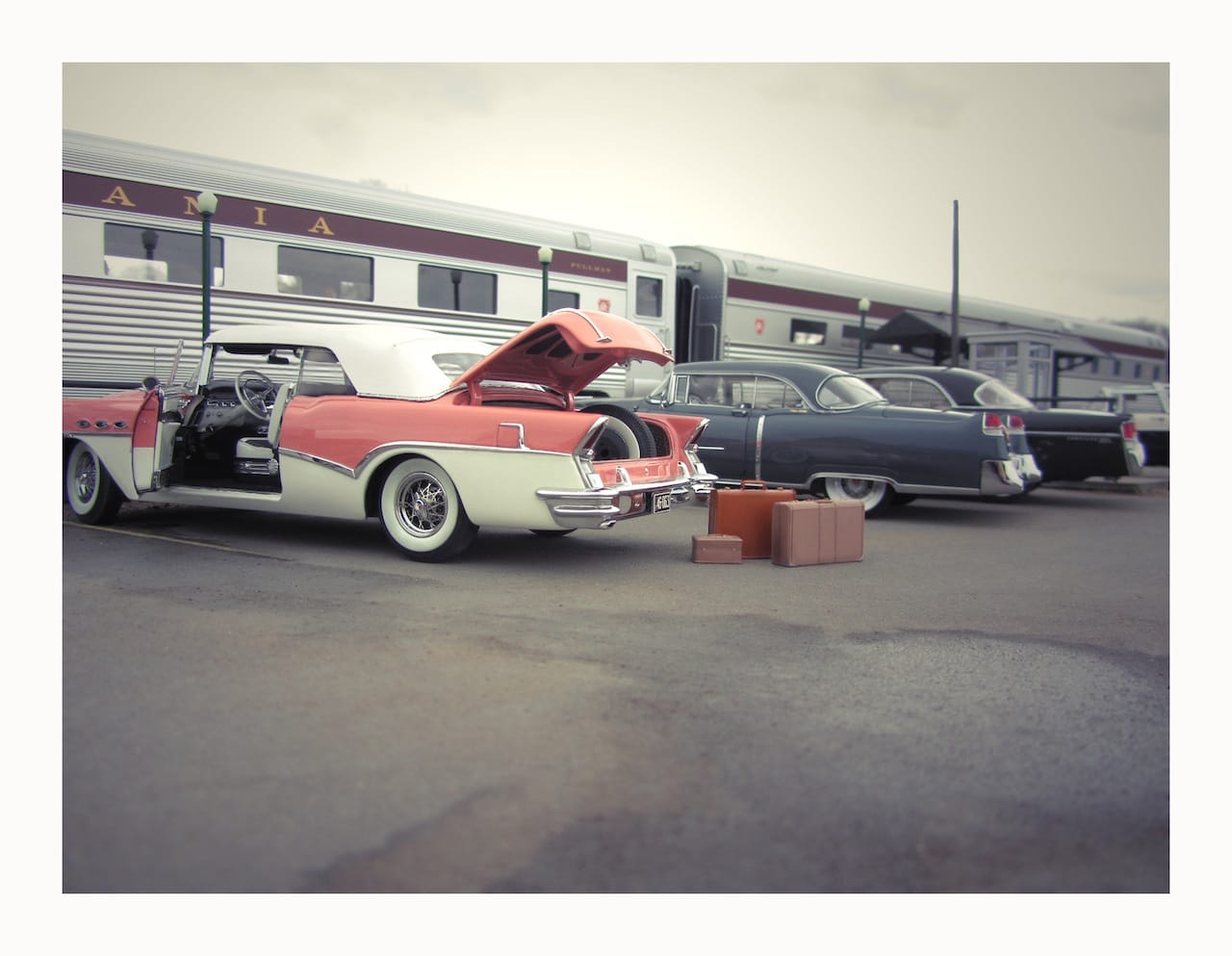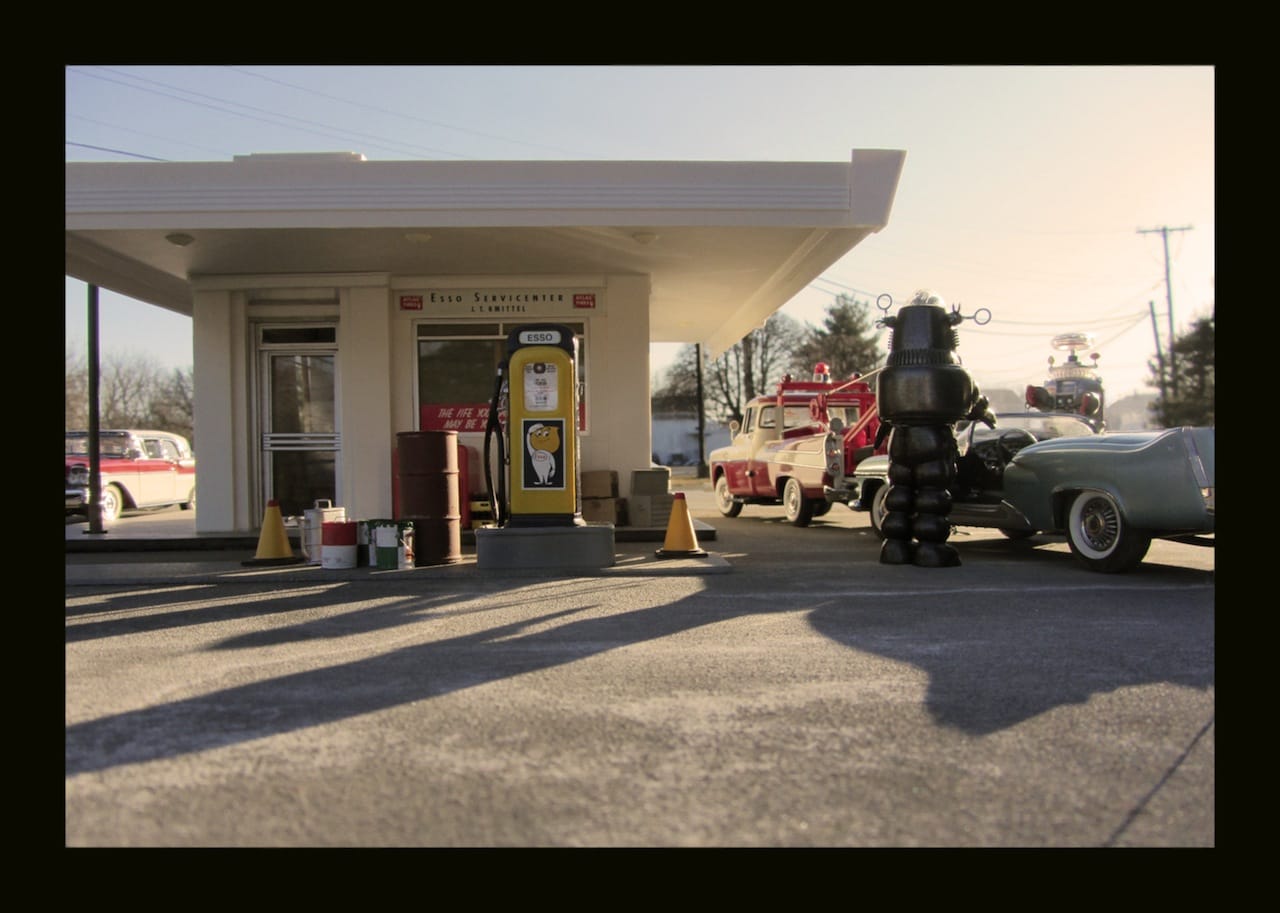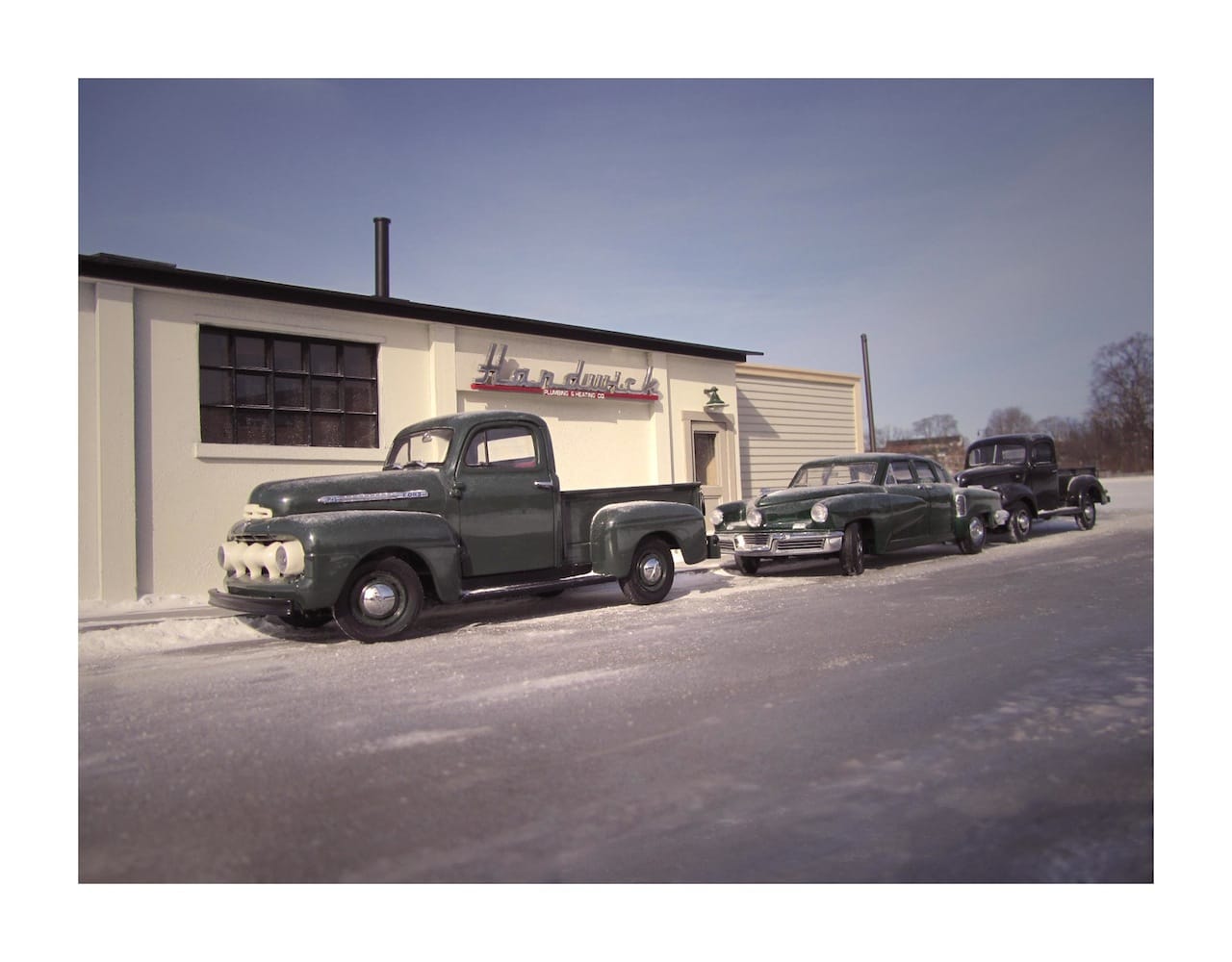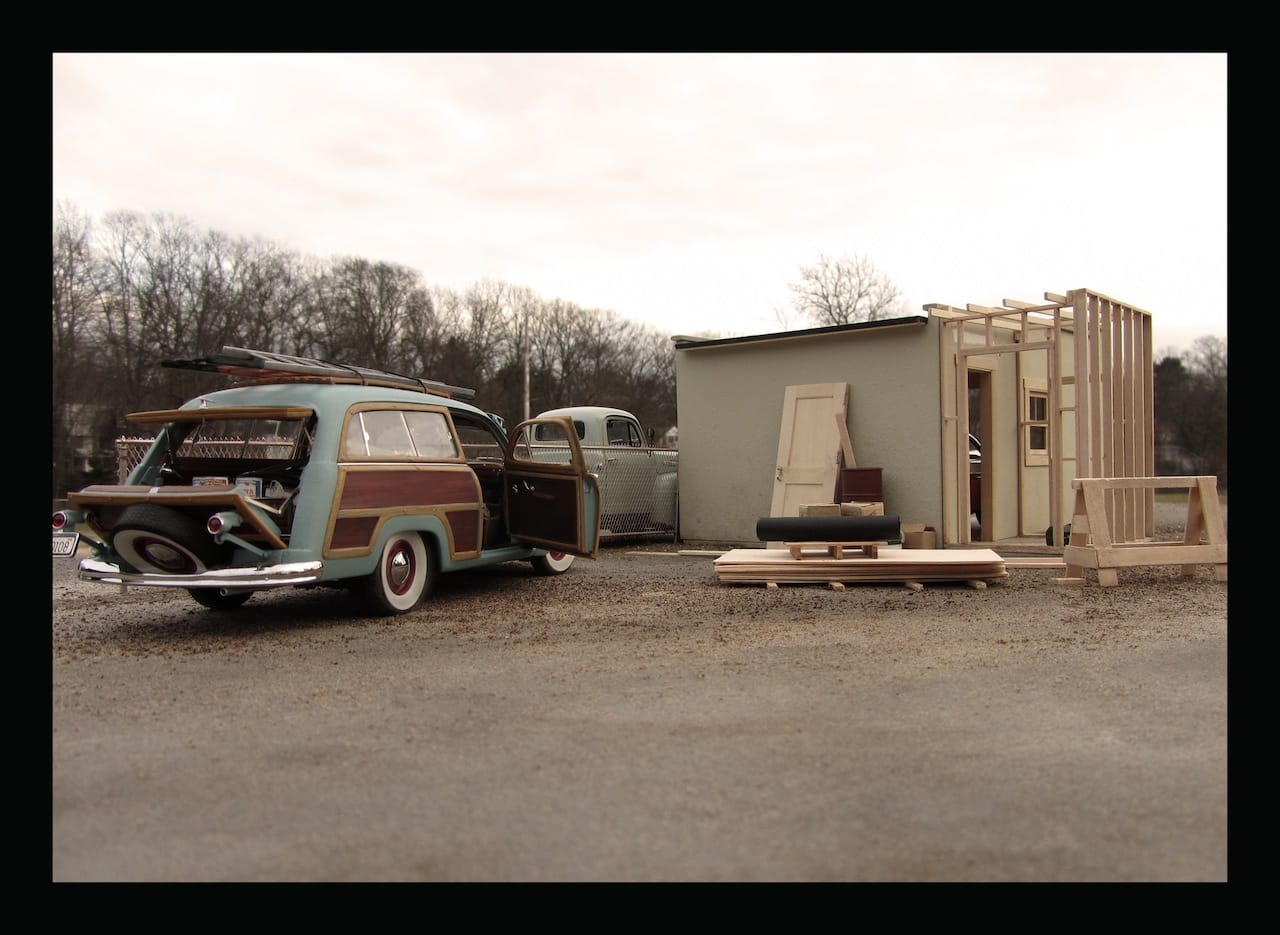A Miniature Town Full of Vintage Cars and Evocative Stories
There’s something slightly off about Elgin Park, the sleepy steel mill town where it’s eternally 1964.

There’s something slightly off about Elgin Park, the sleepy steel mill town where it’s eternally 1964. Pristine, shiny automobiles fill its streets, evoking an eerie nostalgia reminiscent of the sunny, dystopian paradise of The Truman Show. But while Truman’s village of Sea Haven was ruled by the cold-hearted executive producer Christoph, Elgin Park prospers under the lovable, Massachusetts-based hobbyist Michael Paul Smith.
A self-described recluse, Smith created the miniature world seven years ago, when he realized he needed appropriately sized buildings to house the many diecast car models he’d collected since the early 1990s. First he built a gas station; next, a diner. One afternoon, as the models sat idly on the kitchen table, sunbeams poured in, making the scene look strangely real. “I took a photo, and it was showtime,” he told Hyperallergic.
The artist began creating other car-centric scenes, using the knowledge of urban street design he’d gained walking neighborhoods as a mailman to lay out Elgin Park’s streets in a believable way. He filled each structure with everything from tiny woven rugs to mouse-sized copper tea kettles. “Once all of that was in place, it was just a matter of time before my town started to obtain an atmosphere and gravity,” he said.

With his warm eyes and snowy beard, Smith looks like the kind of guy you might see clutching an old lamp on Antiques Roadshow. He says the project grew out of his longtime love of flea markets, trash picking, and old photographs; at one point, he’d collected over 1,000 vintage artifacts and 800 rolls of antique wallpaper. “All of this made me realize that time changes everything. What was once considered modern is now seen as out-of-date,” he reflected. “It was an almost urgent need to document what had passed.”
It was also a way to cope with his own history. He loosely modeled Elgin Park on his hometown of Sewickley, Pennsylvania, where he spent the first 17 years of his life. Being gay, he was severely bullied in school, suffered depression, and eventually tried to kill himself. In a video about the project by filmmaker Danny Yourd of Animal Media Group, Smith shared how creating the project had been a form of therapy. Despite its lack of people, “Elgin Park is never a lonely place for me,” he explained.
Though they’re never seen in Elgin Park, Smith spins oddly prosaic stories about the town’s suburban inhabitants, lending them the largeness of legends. “Abner Krantz was thinking about having a second bay built onto his garage to hold all of his gardening equipment but was concerned about the cost of such a project,” he writes in one image of a shed mid-construction. “One of the guys at the local hardware store suggested he get in touch with Mr. Stewart, an eccentric but talented handyman who lived on the outskirts of town. And so it came about that Mr. Stewart got the job.” It’s absurdly hum-drum in a Twin Peaks sort of way.
The average set takes a few weeks to design and construct, though some labors of love — like a replica of his childhood home — require more than four months of work. Once the models are ready, the actual photography takes just a few hours. “I never know what is going to inspire me, so there might be a few weeks between each photo shoot, or sometimes just a matter of days,” he said. “The whole process is a mystery to me.”
Though cars dominate his imaginary world, Smith doesn’t own one in real life (at least not one he could fit inside). And since he lives in a small three-bedroom, he has to build each structure with modular walls that can be mixed and matched and easily transported — which means that Elgin Park, so tangible on the page, doesn’t actually exist physically. It’s an illusory representation of the past through which the mind can wander thoughtfully; a representation of the many Elgin Parks we all carry in our memories. “I pile everything onto a baggage cart and drag it around,” Smith added with a note of irony.
Despite the project’s success — it’s produced two books (the first in 2011, the second forthcoming in June) and a short documentary — he still refers to it as “a quirky hobby of mine.” And when asked why he thinks people are drawn to Elgin Park, he says, “I’ve created a portal, so to speak, for people to enter, explore, reminisce, and reflect. It’s a place for creative play.”







